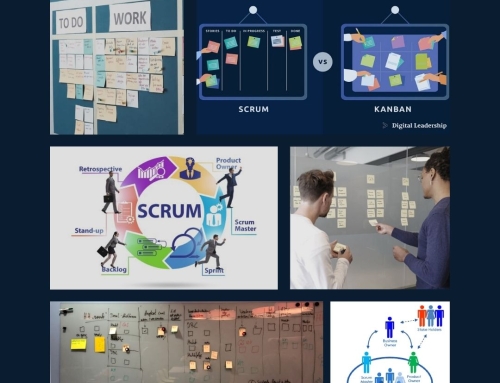CHILD ABUSE …. WE HAVE TO STOP IT …..!!!

Unrealistic expectations of parenthood, differences between what we want and what we actually have, a strained relationship with our marriage partner, too much to do and too little time, financial problems, drug abuse, alcoholism, and a history of being abused as a child are examples of problems that can cause parents to take out anger and frustration on their children. Even very loving parents can lose control to the point of child abuse.
Here are some actions you can take to help children and their parents.
- [highlight]Be a good example[/highlight].
Respect your family members. Use a courteous tone of voice with them. When children misbehave, let them know that you dislike what they did, not who they are. Don’t hit your kids; violence teaches violence. Apologize when you’re wrong. Say “I love you” more often. Reward good behavior. - [highlight]Be a friend to a parent[/highlight].
Listen. Sometimes, just being able to express anger and frustration helps ease tensions. Go shopping with a parent and child. Children are usually better behaved when their adults are happier and more relaxed. Invite a parent to go jogging or bowling or golfing. Exercise helps relieve stress. - [highlight]Reach out to neighbors or relatives with children.[/highlight] Offer to babysit to give them a much-needed break.
- [highlight]Praise and encourage the children you know[/highlight].
Mean words can make a child feel worthless, ugly, and unloved, and the hurt can last a lifetime. So be positive. Tell a child you’re proud of her and why. Stick up for her; don’t let others tease or make fun of her. Smile. Let her know she is important to you. Say, “You’re terrific. I like you!” - [highlight]Take action…don’t wait for someone else to do it![/highlight] Arrange for a speaker on child abuse and neglect to come to your PTA, church, club, or workplace. The more we all know about abuse and neglect, the more we can do to stop it.
- [highlight]Organize safety systems for your neighborhood.[/highlight] Arrange for neighbors who are at home most of the day to watch out for children on their way to and from school. Set up “safe houses” where children can go if they feel threatened or afraid. Participate in a telephone network for neighborhood children who are home alone after school and need help, advice, or reassurance.
- [highlight]Volunteer.[/highlight] Volunteer your time in a child crisis shelter, parenting support program, drug abuse prevention or treatment program, or shelter for the homeless.
- [highlight]Set up an after-school-hours program at a retirement home.[/highlight] It’s hard to tell who benefits more from such an arrangement, the children or the elders.
- [highlight]Form a Carpenters Guild.[/highlight] Work with others in your church, club, or workplace to repair homes of disadvantaged families to make them more livable for children.
- [highlight]Host a baby shower[/highlight].
Invite friends and neighbors to bring items for needy infants and children. - [highlight]Start a resource room.[/highlight] Call your local office of the Texas Department of Family and Protective Services and collect diapers, clothing, toys, books, and formula to help ease the transition for children who must be removed from their homes because of abuse and neglect. Hold a fund raiser to buy school supplies for foster children.
- [highlight]Work in a day-care center.[/highlight] Volunteer your time in a day-care center that serves abused and neglected children. Work with your church, club, or organization to form a partnership with a child-care center that serves low-income children.
- [highlight]Be a mentor[/highlight].
Help a pregnant teen-ager learn parenting skills. Or be a mentor to a pre-teen through one of the school mentoring programs. - [highlight]Learn more about child abuse and child abuse prevention. [/highlight] Teach others. Plan an adult education program in your church, club, or organization to inform people about children’s needs. Open your group’s facility to local education programs for parents.
- [highlight]Become a foster parent.[/highlight] It’s not an easy job, but the rewards are great when you help a child learn what it feels like to be safe.
- [highlight]Help a foster child get a good start.[/highlight] Call the Preparation for Adult Living program in the Texas Department of Family and Protective Services and provide “housewarming gifts” of linens, pots and pans, small appliances, and lamps for 18-year-old foster children who are moving out on their own.
- [highlight]Get involved with the child welfare board in your county[/highlight].
- [highlight]Understand which children are most likely to be abused[/highlight].
Although child abuse occurs in all racial, ethnic, cultural, and socio-economic groups, physical abuse and neglect are more likely among people living in poverty. Children who are most likely to be abused are children who are mentally retarded, premature, unwanted, stubborn, inquisitive, demanding, or have a disability - [highlight]Learn to recognize the signs of abuse. [/highlight] Know the signs of neglect, physical abuse, sexual abuse, and emotional abuse listed at the bottom of this page. Know them.
- [highlight]Report suspected child abuse and neglect.[/highlight] Call 1-800-252-5400 or your local law enforcement agency if you think a child is being neglected, sexually abused, or physically or emotionally abused. Children are hardly ever abused only once. If you suspect it, you must report it. That’s the law. Reporting suspected child abuse makes it possible for a family to get help. Note: Other states may use (512) 834-3784 to report abuse or neglect that has occurred in Texas.
SCIT MBA(ITBM)2013-2015















